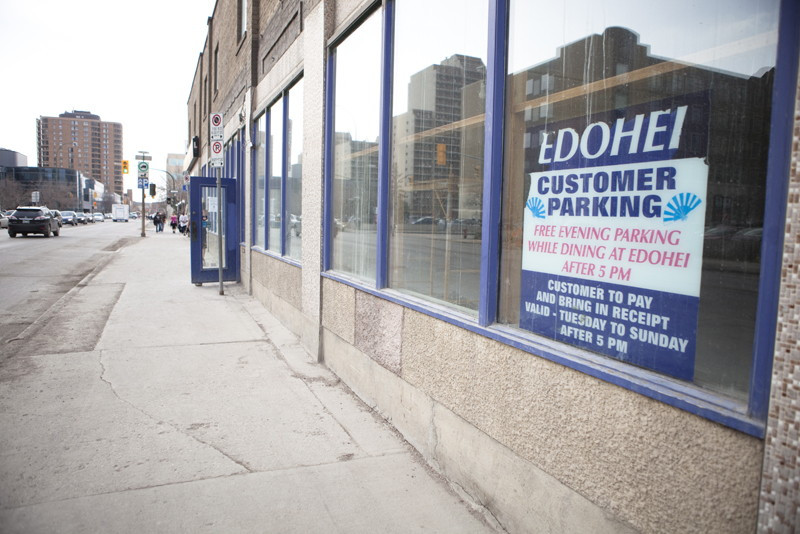Local sushi institution closes, building to be re-developed
Winnipeggers discuss implications for development of Ellice Avenue
Edohei Restaurant - Winnipeg’s original sushi joint - has closed the doors of its humble Ellice Avenue location for good after nearly 25 years of serving up what’s come to be regarded as some of the city’s best Japanese cuisine.
Edohei’s former owner, world-renowned chef Sadao Ohno, 61, explained the closure of his business coincided nicely with an offer for the purchase of its building, and that he was happy to hear that the buyer intended to re-develop the property.
He also confirmed redevelopment would begin with the demolition of the building in which Edohei resided - a two-level, multi-tenant structure situated at the corner of Ellice and Carlton - and that the new building would house a pharmacy and medical offices.
While the cherished restaurant’s closure after a fruitful lifetime is certainly no tragic tale, the event has sparked conversation regarding the overall state of Ellice Avenue and its prospects for development.
Walter Krawec, who blogs about civic issues at OneManCommittee.com, commented on the matter.
“Looking at Ellice in the downtown area, what it really suffers from is a lack of the basic structure of what creates an urban environment,” he said, referring to the stretch’s many visually unappealing street-level parking lots.
“Experience in observing what goes on (in downtown Winnipeg) tells me that, quite often when you lose a building like (Edohei’s), what ends up replacing it just isn’t as good.
“ Looking at Ellice in the downtown area, what it really suffers from is a lack of the basic structure of what creates an urban environment.
Walter Krawec, blogger, OneManCommittee.com
“I’m a little guarded in my optimism here,” he added. “I don’t know if I would bet that what we’re going to end up with as a community (regarding the Edohei property’s re-development) is going to be what could be described as a ‘net improvement’ overall.”
Krawec also explained that, in terms of developing Ellice Avenue and other similar routes in downtown Winnipeg, a major obstacle currently comes in the form of a general lack of financial incentive for developers to focus on density and verticality.
“In my mind, I think there will be true progress when you can count the number of empty buildings and surface parking lots on Ellice - some of which have been there since literally the 1950s - and see that those numbers have started to go down,” he said.
Recently, the West End Business Improvement Zone (BIZ) proposed Ellice Avenue be considered for official designation as an “image route” - a term that has recently been used by the city government in labelling roadways that will receive an increase in funding for purposes of beautification.
When city council released the updated list of designated routes this February - which includes Main Street, Pembina Highway, Portage Avenue, St. Mary’s Road, St. Anne’s Road and others - the BIZ protested Ellice’s exclusion from the initiative.
“(Ellice) is a direct link between the airport area and the downtown, and we believe that it’s a significant entry-route into the city,” explained Gloria Cardwell-Hoeppner, executive director of the BIZ.
The new airport will see an estimated three million passengers each year, Cardwell-Hoeppner added, and the BIZ thinks that designating Ellice Avenue as an image route because of this is a very good option.
She noted that the downtown segment of Ellice, which was home to Edohei, does not fall into the area of the BIZ’s responsibility, and that the West End portion of the street has seen remarkable improvements in recent years - many of which are due to the organization.
“Ellice is a key component to this city,” Cardwell-Hoeppner said. “And we feel that it has a lot to offer.”
Published in Volume 66, Number 24 of The Uniter (March 21, 2012)







